09 February 2021
Check Your Ewe Ration For Energy
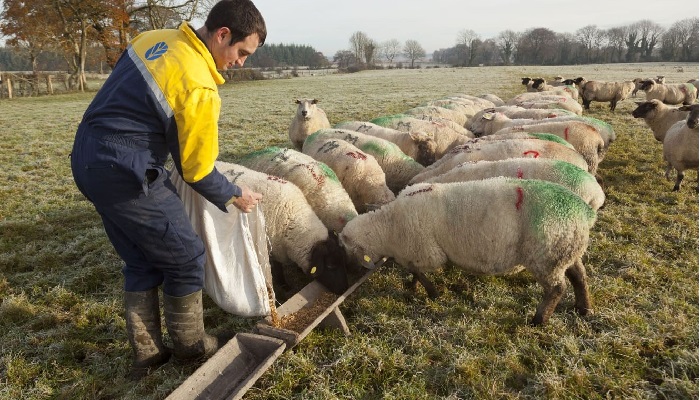
Edward Egan, Teagasc, Meath received ingredient labels from farmers for their late pregnancy ewe ration. He was surprised to see so many rations with average quality ingredients making up 40% plus of these rations. This results in rations that are low in energy. Edward advises to check ration energy
In the last week a number of sheep farmers have sent me the ingredients label for their late pregnancy ration. I am surprised to see so many rations with what I would call just average quality ingredients making up 40% plus of these ration. This is resulting in rations that are low in energy i.e. below 0.95UFL per 1kg as fed. There a number reasons why a compounder might do this. One is to make a ration look like good value for those that only judge a ration on protein % & price.
Ration
Very often the actual energy level in the concentrate is unknown. Look at the label on the feed bag, you will find its protein % clearly shown. However it’s rare to see any mention of energy levels. A typical commercial ewe ration contains 7-11 ingredients. This adds to the confusion. Some manufactures exploit this lack of knowledge of energy & ingredients by using cheaper average or lower energy ingredients to meet the farmers required protein % at the expense of energy.
4 Steps to Understanding Energy
- Under the NE system when comparing feedstuffs for energy 1kg of air dried barley is taken as the standard measure of energy. Thus 1kg of barley as fed contains 1.00 UFL or 1.00 unit of energy. A feed with a UFL value lower than 1.00 contains less energy than 1kg of barley. Feed with a UFL value higher than 1.00 contains more energy than 1kg of barley. A good ration will have a UFL value of 0.95UFL or more per 1kg as fed.
- If you use the ME system to measure energy then a good ration will have a ME value of 10.5MJ or more per 1kg as fed. Your Teagasc adviser can calculate these figures for you.
- When comparing energy values it’s also important to compare like with like i.e. in-terms of comparing all feeds per kg as fed or else per kg of dry matter.
- The figures in table 1 are compared per kg as fed. The high energy ingredients are in green. In yellow is the just average for energy ingredients. In my opinion the ingredients in yellow should never make up more than 25% of a ration. The low energy ingredients are in red. The lower down the ingredient is in this list the lower its energy content.
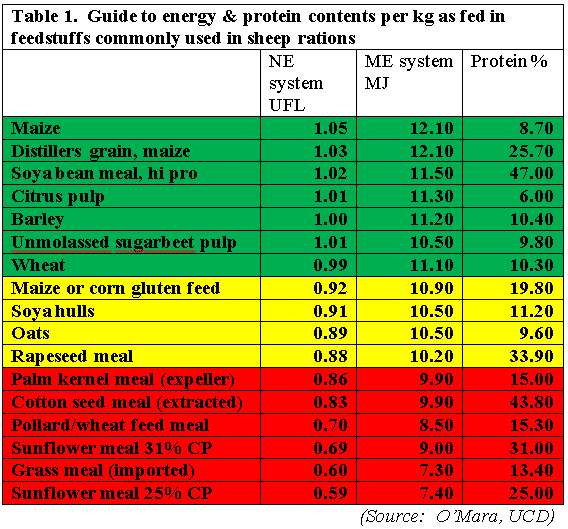
Late pregnancy requirements
A ewe’s energy & protein needs increases rapidly in the last 6 weeks of pregnancy as summarised in table 2. To get twin & triplet bearing ewes to avoid excessive loss of condition & to produce good colostrum, good birth weights & plenty of early milk you must feed a good quality ration.
 4 Steps to Judging a Ration
4 Steps to Judging a Ration
- Do not be fooled by the protein %. While the protein % of the meal is very important it’s not a direct reflection of energy value. Not all 18% protein rations contain the same amount of energy. Decide on the protein % that you need in late pregnancy i.e. 18% to 20%. Then look at the ingredients. Avoid rations containing a lot of average or low energy ingredients.
- Look at the list of ingredients before buying. Compounders by law must show ingredients in order of inclusion by weight. While you may not have the % of each ingredient you can judge which ingredients make-up most of the ration. When listed in descending order ingredients at the top of the list make up the highest % of the ration. If there are poor quality ingredients in the ration the closer they to the end of the ingredients list the better. Some compounders give the precise % of each ingredient. If you give these figures to your Teagasc adviser they can calculate an energy value & protein %.
- Find out what the energy value of the ration is per kg as fed. A good ration will have a NE value of 0.95UFL or higher per 1kg as fed or an ME value of 10.5MJ or more per 1kg as fed.
- Do not judge a ration by its name.
Rapeseed, palm kernel & sunflowers
Rapeseed meal which contains a medium level of energy is often used to replace soya bean. However soya bean is much in higher energy. The energy value of pollard or wheat feed meal is low & varies from 0.7-0.77 UFL. Palm kernel meal is another low energy ingredient. Sunflower is widely used in sheep rations instead of soya bean to increase the protein %. Sunflower is a very poor energy source as shown in table 1. Sunflower meal is typically 30-40% lower in energy than soya bean. So including sunflower meal in a ration is going to drag down its energy value.
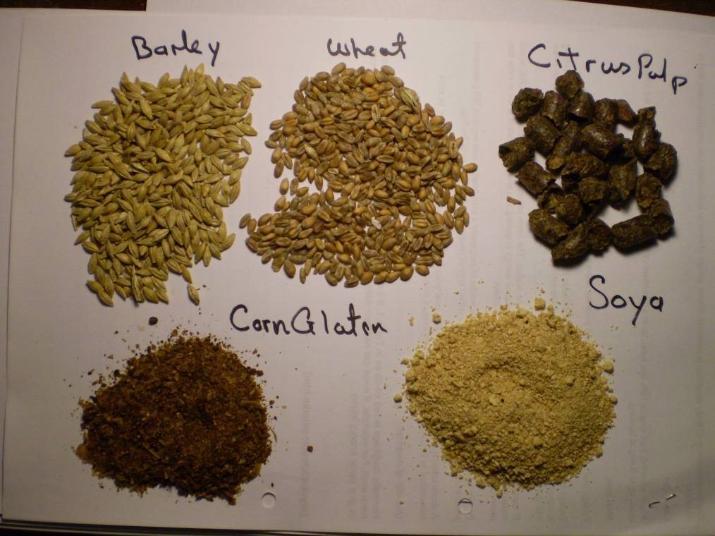
Soya, barley & pulps
Maize, citrus, barley, sugarbeet pulp & soya bean are all high energy ingredients widely used in sheep rations. Citrus & sugarbeet pulp have the advantage of containing a highly digestible fibre. This helps to keep the rumen health. The low protein content of citrus (6%) is made-up by soya bean. Soya bean combines a high energy level with the best quality protein you can get. Soya bean is especially useful when you’re feeding lower quality silage or hay. While oats does not appear very high up in table 1 it still has a place in sheep rations when balanced for protein & energy. Corn gluten feed has a medium energy content.
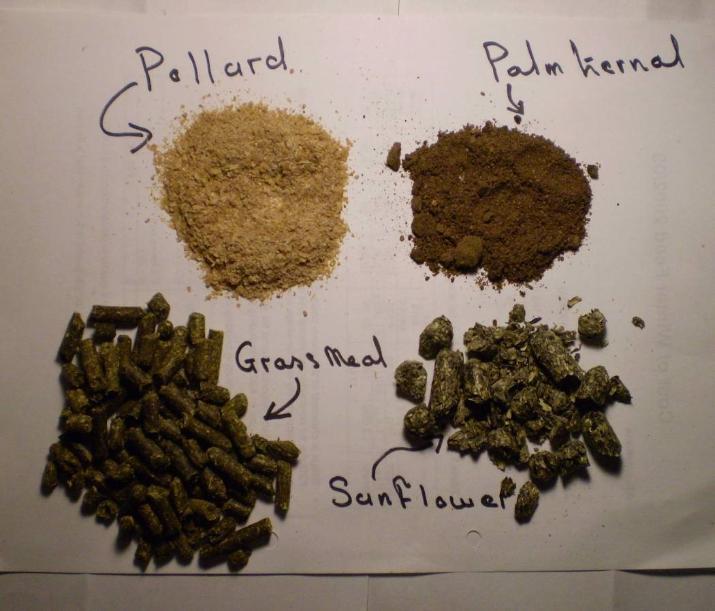
Remember, a value for money concentrate is always one that has the right balance of energy, protein, fibre & minerals.
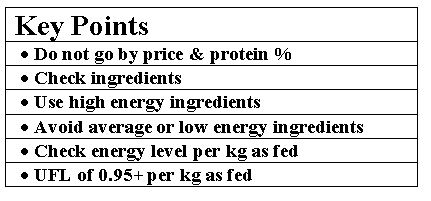
For more information on Sheep Nutrition check out the Teagasc Sheep Nutrition webpage
